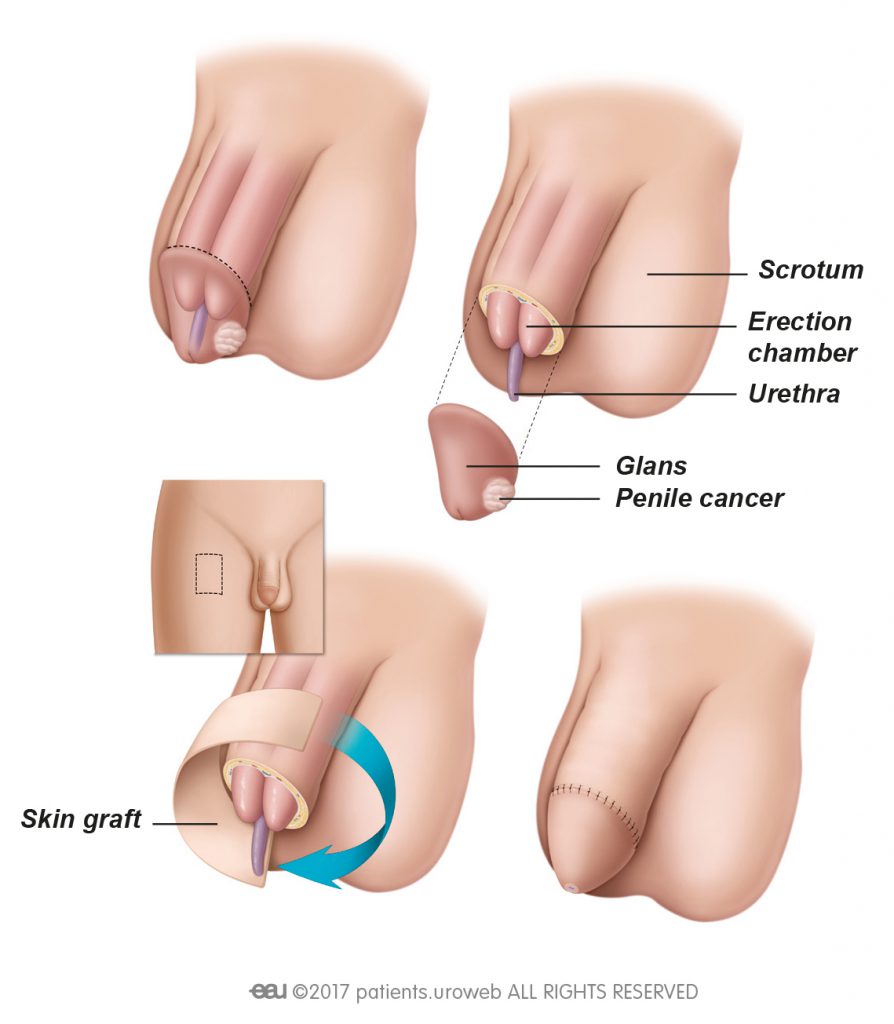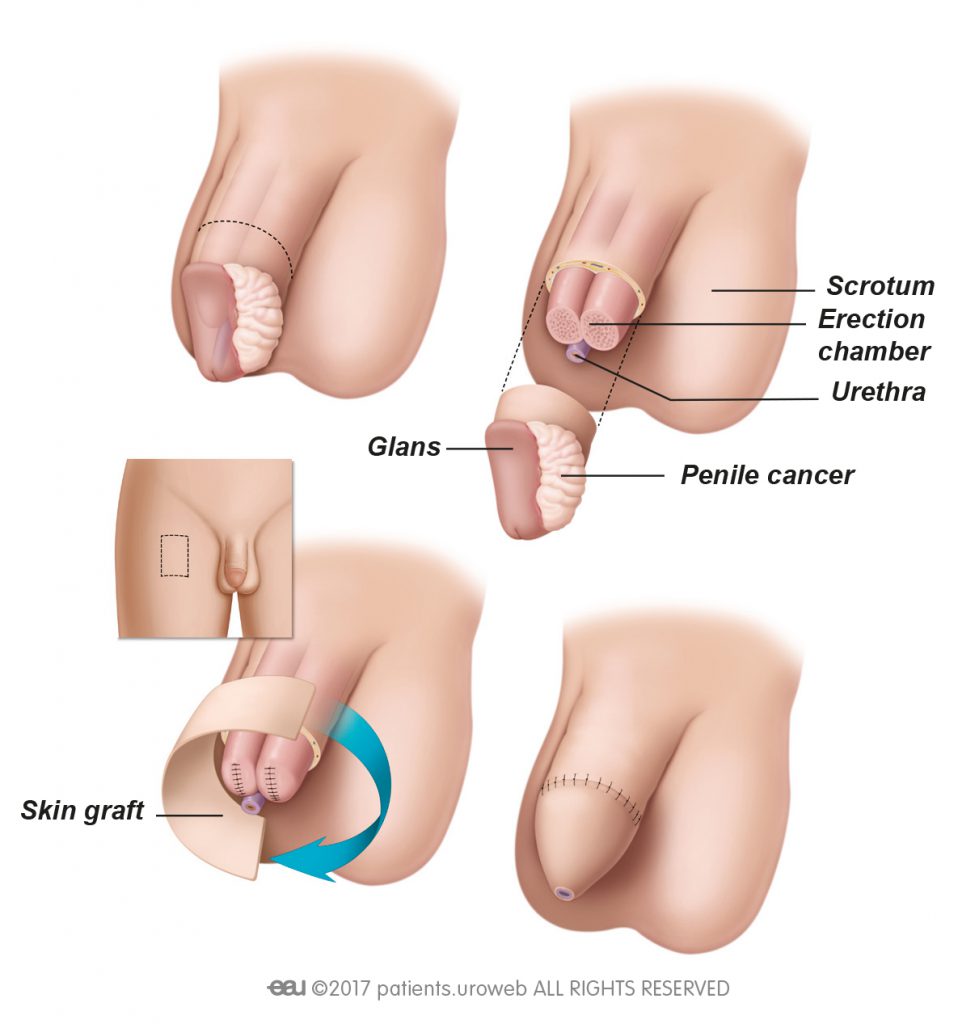Treatment
For pre-cancerous or superficial disease, treatment may involve the use of immunotherapy or chemotherapy in the form of topical creams, laser ablation, circumcision, or wide local excision, causing minimal change to the appearance and function of the penis.
Surgery
For more extensive early-stage disease involving the glans, a partial glansectomy or total glansectomy may be performed (below). A skin graft from the thigh may be taken to refashion the glans. This can give a good cosmetic result, but the penis will be shorter.

Glansectomy

Partial penectomy
Images courtesy of European Association of Urology
For more invasive disease a partial penectomy will be performed resulting in the loss of part or most of the penis. In more severe disease a radical total penectomy (total amputation) may be needed. This will result in the formation of a perineal urethrostomy which will mean that men will need to sit down at the toilet to urinate.
If cancer has spread to inguinal or pelvic lymph nodes, then these may be surgically removed increasing the risk of lymphoedema. Chemotherapy and immunotherapy may be also recommended although these treatments tend to be part of clinical trials.
An alternative to surgery for localised disease is radiotherapy, either external beam or brachytherapy (internal). This type of treatment is rare in the UK.
- Topical chemotherapy and immunotherapy creams may cause blistering to the penis and a barrier cream or emollient may be needed. These symptoms may take some time to settle after treatment.
- Although men will usually be able to return to normal physical activity within weeks (depending on the extent of surgery), the process of complete wound healing will take longer. The appearance of the penis may initially be traumatic for men but for minor surgery and glansectomy the appearance should improve as healing takes place. The colour of a skin graft may be a slightly different colour to the normal colour of the penis.
- Surgical dressings will be managed by the specialist team. Once no longer needed it is best to advise careful management e.g., preventing friction when drying healing areas to avoid skin irritation and infection by gently patting the wound site dry with a clean towel or gauze, and avoiding any material that may leave fibres on the site. Alternatively, a hairdryer on a cold setting can be used to gently dry the area.
- If a graft has been taken from the thigh a waterproof dressing will be applied which will need to remain in place for 2-weeks. As the site of the skin graft heals it may cause an unusual odour which can cause alarm, but this is us a result of the natural healing process.
- Stitches will be dissolvable but may take 4 – 6 weeks to dissolve.
- A urinary catheter may need to remain insitu for some types of surgery. Information on managing catheters can be found here.

When I returned home from my operation those first couple of days were tricky to get around. Trying to put pants on was out of the question. I wrapped myself up in a cotton bed sheet. I could wrap this around me like a toga if I needed to move.
My husband wore one of my t-shirt nighties which is quite oversized, and he loved it. He said it was so comfortable and didn’t rub anywhere whilst maintaining his dignity. Also make sure the catheter is fastened at the top of the leg with a support.

Reviewed November 2023
